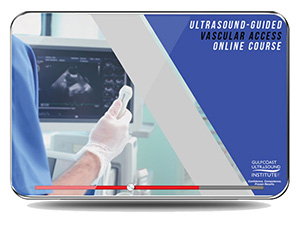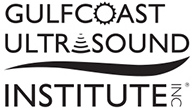(727)363-4500
|
CREATE ACCOUNT
|
LOG IN
|
CART
|
Item(s) added to cart
Proceed to Checkout
Continue Shopping

The Introduction to Ultrasound-Guided Vascular Access online course is planned in accordance with the Agency for Healthcare Research & Quality (AHRQ), ACEP, and WINFOCUS guidelines and is designed for medical professionals who perform central or peripheral line placement. This program combines a comprehensive review of ultrasound fundamentals, guidance techniques, ultrasound vessel differentiation, procedural set-up, and in-plane and out-of-plane scanning techniques for performing central and peripheral line placement. This self-directed course is in a modular format and includes recommended reading assignments, online video lectures, case presentations, and online interactive quizzes.
Enrollment is valid for 12 months (365 days) and begins the moment the participant is enrolled. Extend your online course access another 3 months with the addition of an onsite hands-on workshop or registration for a regularly scheduled GCUS scan workshop.
Date of Original Release: 4/1/2024
This edition valid for credit through: 4/1/2027
Registration: $350.00
(12 Months Unlimited Access)

Andreas Dewitz MD, RDMS
Clinical Professor of Emergency Medicine
Clinical Director of POCUS Education, Solomont Simulation Center
Department of Emergency Medicine Boston Medical Center
Boston, MA
No relevant financial relationships to disclose.


Lori Green BA, RDMS, RDCS, RVT
President, Program Director.
Gulfcoast Ultrasound Institute, Inc.
Saint Petersburg, FL.
No relevant financial relationships to disclose.

James Mateer, MD, RDMS (Medical Director-planner, QI Task Force Subcommittee)
Medical Director, Gulfcoast Ultrasound Institute
Milwaukee, WI
No relevant financial relationships to disclose.
Charlotte Derr, MD, RDMS, FACEP, FPD-AEMUS (Co-Medical Director-planner & QI Task Force Subcommittee)
Associate Professor of Emergency Medicine
Fellowship Director of Advanced Emergency Medicine Ultrasound Fellowship Program
University of South Florida Morsani College of Medicine
Tampa, FL
No relevant financial relationships to disclose
Andreas Dewitz, MD, RDMS (Member of Advisory Board & QI Task Force Subcommittee)
Associate Professor of Emergency Medicine
Vice Chair of Ultrasound Education
Boston Medical Center, Boston, MA.
No relevant financial relationships to disclose
Lori Green, BA, RDMS, RDCS, RVT (Program Director - planner, Content Reviewer, QI Task Force Subcommittee)
Program Director and President,
Gulfcoast Ultrasound Institute, Inc.
St Petersburg, FL.
No relevant financial relationships to disclose
Trisha Reo, AAS, RDMS, RVT (Program Coordinator - planner, Content Reviewer, QI Task Force Subcommittee)
Gulfcoast Ultrasound Institute, Inc.
St Petersburg, FL.
No relevant financial relationships to disclose
The Gulfcoast Ultrasound Institute is accredited by the Accreditation Council for Continuing Medical Education (ACCME) to provide continuing medical education for physicians.
The Gulfcoast Ultrasound Institute designates this internet activity enduring material for a maximum of 4.75 AMA PRA Category 1 Credit(s)™. Physicians should claim only the credit commensurate with the extent of their participation in the activity.
This course also meets CME/CEU requirements for ARDMS. Note: While offering the CME credit hours noted above, activities are not intended to provide extensive training or certification for exam performance or interpretation.
Serving the Medical Community
Participants Trained
CME Credits Awarded
Courses Offered
(727) 353-8222 - Google Ads